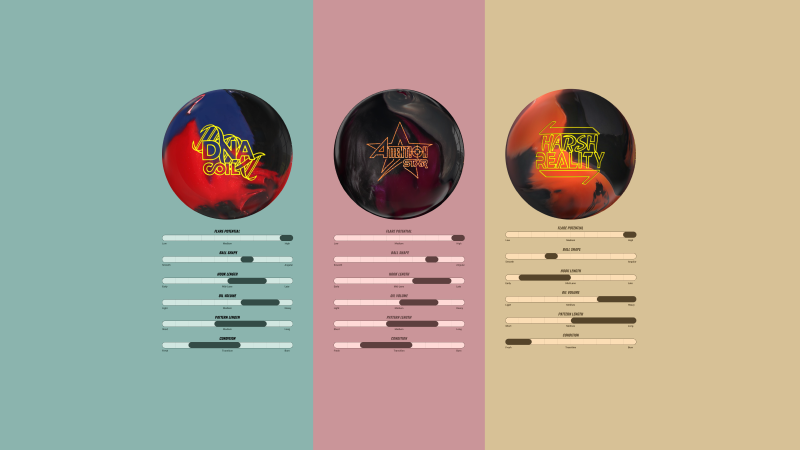In the world of bowling, choosing the right equipment can significantly impact a player's performance. With the introduction of Storm Bowling's new reaction charts, bowlers now have access to comprehensive information that aids in making informed decisions about their bowling ball selections. These reaction charts provide valuable insights into the characteristics of each ball, helping consumers better understand how they will perform on the lanes.
Understanding the Charts
Flare Bowling ball flare is the pattern of marks that appear on the ball's surface after it rolls down the lane. These marks show how well the ball can move and shift direction when it hits areas of friction. Balls with high flare potential are known for their ability to make sharp turns and offer varied play styles, showing their versatility and angular movement. On the other hand, a ball with low flare potential provides a smoother and more predictable path. This distinction is crucial for bowlers looking to match their equipment to their playing style and the conditions of the lanes.
Ball Shape The ball shape significantly impacts how a bowling ball moves down the lane, leading to either angular or smooth reactions. Angular balls are known for their sharp, distinct hooks. On the other hand, smooth balls glide into a gentle, consistent curve. This distinction in motion is crucial for bowlers to understand, as it affects their strategy and choice of ball.
Hook Length Hook length is all about how far the ball goes before it starts to curve. Knowing the hook length is key for bowlers to predict how the ball will move. This knowledge lets them adjust where they stand and aim to improve their game. It's also crucial for understanding ball shape and how it impacts the ball's path on the lane.
Oil Volume Oil volume on the lane surface is key to how well a bowling ball performs. Balls built for higher oil volumes grab the lane better, giving you more control. On the flip side, balls for less oily conditions glide further and snap harder at the end.
Pattern Length The pattern length is key to figuring out the best lane condition for a bowling ball. Balls made for shorter patterns are great at hooking early, while those meant for longer patterns keep their energy for a stronger and more steady reaction at the end.
Lane Conditions Lane conditions are sorted into three main stages based on oil coverage: fresh, transition, and burn. In fresh conditions, lanes have the most oil, offering high skid and strong backend reaction. As the game progresses, the oil starts to break down leading to transition conditions. This stage demands changes in both ball choice and playing style. Burn conditions indicate a significant drop in oil, requiring balls that offer later reactions to manage the backend movement effectively.





.jpeg)
